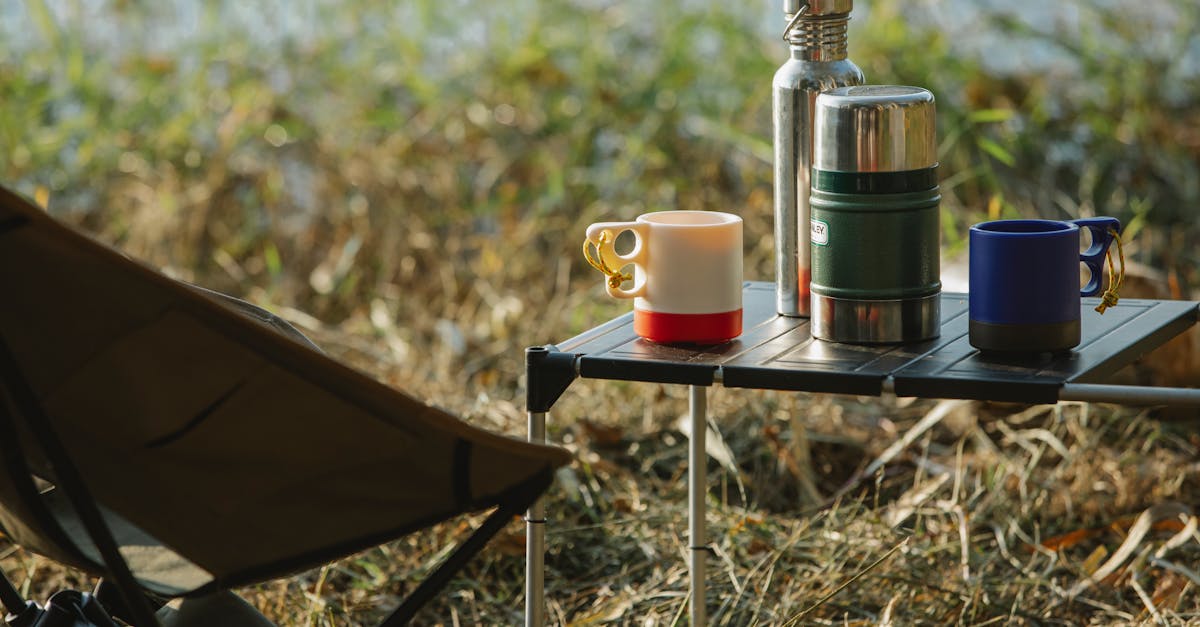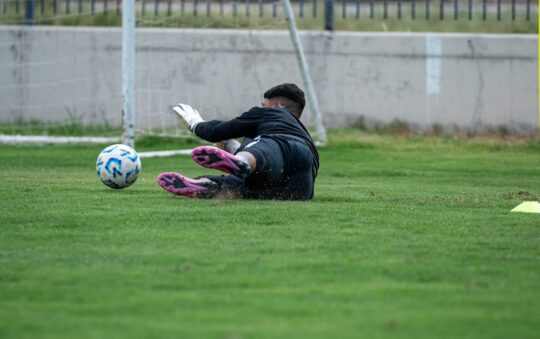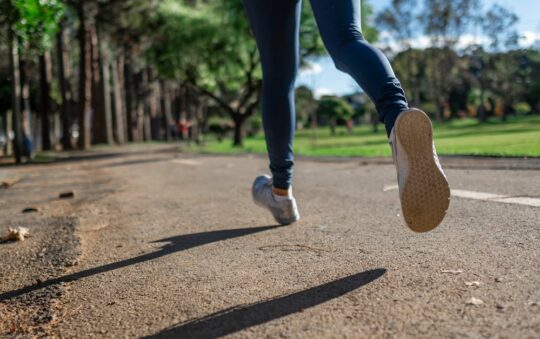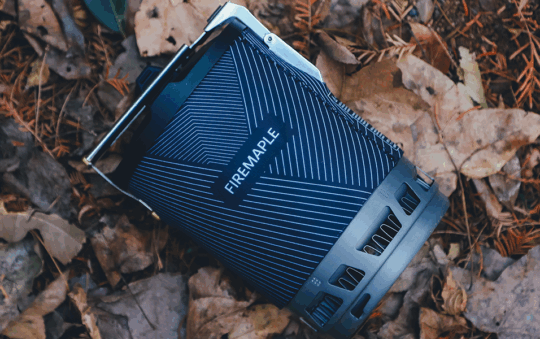Have you ever struggled to find a stable spot for your morning coffee while camping? I’ve been there—balancing cups on uneven rocks or makeshift surfaces, wishing for something more reliable. That’s when I discovered foldable camping tables, a game-changer that turns any outdoor spot into a cozy, organized space.
These tables aren’t just convenient; they bring a touch of comfort to the wild, making meals, games, and gear setup effortless. In this text, I’ll share why foldable camping tables deserve a spot in your backpack and how to choose the perfect one for your adventures.
Features of Foldable Camping Tables
Foldable camping tables bring a lot to the campsite beyond just a flat surface. Their design and functionality make outdoor life smoother whether you’re sipping coffee or setting up a quick meal. Let’s break down what truly matters when picking one out.
Materials and Build Quality
The strength of a camping table starts with what it’s made from. Most foldable tables feature aluminum frames paired with plastic or metal tops. Aluminum keeps the weight down without sacrificing durability — ideal when you’re carrying gear across uneven ground. Plastic tops resist stains and are easy to wipe clean after muddy finger smudges or spilled drinks (which happens more than I care to admit).
Some higher-end models use bamboo or hardwood surfaces for a natural look, but they can add weight. If rain is a frequent companion, look for rust-resistant coatings on metal parts. I’ve found that even little things like reinforced hinges and sturdy locking mechanisms can make a huge difference over time, especially if you use your table often.
Size and Weight
Finding the right size is like Goldilocks: not too big, not too small. A table that’s around 20 by 20 inches usually fits two to four people comfortably. Larger models exist but can be a pain to transport and take up precious campsite real estate.
Weight is crucial here. Most foldable camping tables weigh between 5 and 15 pounds. If you’re backpacking, every pound feels like ten, so aim for something lightweight and compact. On the other hand, car campers can afford something heavier that offers more stability.
Here’s a quick size and weight range breakdown:
| Size (inches) | Weight (pounds) | Seats Up To |
|---|---|---|
| 16 x 16 | 4 – 7 | 2 |
| 20 x 20 | 7 – 10 | 4 |
| 24 x 24+ | 10 – 15 | 6+ |
Portability and Foldability
Portability is the heart and soul of foldable tables. Many models fold down flat and come with carry handles or travel bags. The best ones unfold and set up in under a minute, which means more time enjoying your hike instead of wrestling with gear.
Tip: Look for tables with a simple one-handed folding system. I once struggled with a complicated latch setup and ended up fighting my own table while my friends watched—and laughed. Don’t be me.
Also, some tables fold into compact rectangles, while others break down into separate parts. The split-leg designs are great for tight storage spots (like a car trunk), but those extra pieces can be easy to misplace.
Load Capacity
Load capacity tells you how much weight the table can handle without wobbling or worse—collapsing. This usually ranges from 30 to 100 pounds depending on the frame and build quality.
If you’re just placing snacks, coffee pots, and light gear, 30 to 50 pounds is fine. But if you plan on using it for heavy camping stoves or a full dinner spread, look for tables with higher weight ratings.
Quick tip: Always check the manufacturer’s specs, but add a safety margin. For instance, if a table says it supports 50 pounds, I treat it like 40 to avoid surprises.
Additional Features
Some foldable camping tables come with handy extras that make life easier:
- Built-in cup holders: Perfect for baking a cup of coffee without spills.
- Storage pockets or racks: Great for keeping utensils, napkins, or your phone handy.
- Adjustable legs: Let you set the table steady even on uneven ground (very useful if you’re camping where flat spots are rare).
- Weatherproof surfaces: Avoiding warping or damage from rain and sun exposure.
- Attachment hooks: Handy to hang small gear or bags off the ground.
I remember using a table with adjustable legs on a rocky hilltop—it was a total lifesaver for keeping my gear organized and off the dirt.
When you’re hunting for a foldable camping table, these features help you figure out what fits your style and trips best. Take a moment to think about your usual camping habits—it’ll make picking the right table a much smoother process.
Performance and User Experience
When it comes to foldable camping tables, how they perform and feel during use can really shape your outdoor adventure. I’ve tested several models under different conditions and here’s what I found about their setup, stability, surface, and weather handling.
Setup and Breakdown Process
Setting up a foldable camping table should be as straightforward as unfolding a picnic blanket. The best ones open and lock into place in just a few seconds—no scouting for hidden levers or confusing snap points.
I remember one camping trip where my table popped open instantly while my buddy struggled with his for almost five minutes. Trust me, simple mechanisms save time and frustration.
Quick tips for smooth setup:
- Choose tables with clear locking hinges or clips.
- Look for models that fold flat to easily slide into your car or backpack.
- Practice at home once so you’re ready when the mosquitoes start swarming.
On average, a quality foldable table takes about 10 to 15 seconds to set up or fold down—perfect for quick pit stops or meal breaks.
Stability and Durability
Nothing kills the vibe like a table that wobbles every time you set a cup down. The frame material and leg design make a big difference here. Aluminum frames strike a good balance because they’re lightweight yet firm.
One table I tested featured adjustable legs that locked solidly on uneven ground—a life saver when camping on rocky or sloped terrain. Stability also depends on the size and shape of the tabletop; wider bases usually provide less wobble.
Here’s a quick stability checklist:
- Look for non-slip feet or rubber pads to grip the ground.
- Adjustable legs help level the table on tricky surfaces.
- Frames made from sturdy aluminum or steel stand up better to outdoor use.
In terms of weight tolerance, these tables usually handle between 20 and 50 pounds. I once loaded a foldable model with a heavy cooler and cookware—held steady without any problems.
Surface Usability
The tabletop surface is where all the action happens—meals, card games, or even your laptop for last-minute emails (because let’s be honest, sometimes work follows). Materials like laminated plastic or aluminum sheets offer smooth easy-to-clean surfaces that won’t absorb spills or stains.
One tip I found useful is choosing surfaces with UV protection coatings, which prevent fading or cracking after sun exposure. Having a slightly textured surface also helps keep items from sliding when the wind picks up or you accidentally bump the table.
Common surface features I appreciate include:
- Built-in cup holders or side hooks for mugs and utensils.
- Waterproof surfaces that dry quickly after rain.
- Lightweight yet firm tabletops that don’t sag under pressure.
Weather Resistance
Outdoors means braving the elements. A foldable camping table with good weather resistance will keep you chill no matter if there’s sun, rain, or a few unexpected gusts.
From my experience, waterproof tops paired with rust-resistant frames make a big difference. When a quick rainstorm caught me off guard, my table shed water like a champ and packed up dry, ready for the next day.
Look for these weather-friendly features:
- Aluminum frames to avoid rust.
- Weatherproof coatings on surfaces.
- Drainage holes or grooves that prevent pooling water.
That said, no table gets along perfectly with harsh windstorms—so using sandbags or securing legs into the soil can prevent unwanted flying launches. It’s a simple fix I swear by.
If you’re wondering about performance, these details all combine to make your camping days feel more relaxed and organized—without the headaches of bulky or flimsy gear. I’ve found that investing just a little extra in setup ease, stability, surface features, and weatherproofing pays off big time during those outdoor hangs.
Pros of Foldable Camping Tables
If you’ve ever juggled a hot coffee cup and your camping gear on uneven ground, you know how a solid table can save the day. Foldable camping tables bring a bunch of practical perks that turn outdoor hassles into easy wins.
Lightweight and Portable
These tables usually weigh just a few pounds thanks to aluminum frames and slim tabletops. I remember lugging a bulkier setup once—it wasn’t fun. Carrying a foldable model feels like bringing along a tiny helper that fits effortlessly into your car or backpack. Plus, most fold flat, so they slide into storage spots without fuss.
Fast Setup and Breakdown
Nobody wants to waste time fiddling with complicated gear after a long hike. Foldables often have simple hinge mechanisms or snap locks, letting you go from carrying case to ready-to-use in seconds. On top of that speeding up camp setup, it means less frustration (my favorite part).
Strong and Stable Surface
Even though being lightweight, many foldable tables can hold 30 to 50 pounds or more. That means they can handle your cooler, cooking gear, or even a small grill. Some even have adjustable legs to keep them steady on uneven terrain. I tested a few where the surface felt rock solid on gravel—trust me, stability outdoors is a big deal.
Compact Storage Space
They fold down to a smaller size than traditional tables. I love this feature because it frees up room for other camping essentials or groceries. Plus, tight storage means less clutter in the trunk or tent area.
Versatile Uses
Beyond meal prep or coffee spots, I’ve seen foldable camping tables work great for card games, organizing gear, or a makeshift workstation if you need to catch up on stuff remotely. One friend even uses his as a plant stand at home—proof that these tables aren’t just for the wild.
Weather-Resistant Materials
Many models use plastic or coated metal tops and rust-proof legs. This keeps them looking good and performing well after exposure to sun or rain. One thing I learned: cleaning up after a day outdoors is easier if the surface is smooth and doesn’t absorb stains.
Here’s a quick checklist to get the most from a foldable camping table:
- Look for adjustable legs to handle uneven ground
- Prioritize lightweight frames for better portability
- Choose tabletop materials that resist stains and rust
- Check load capacity based on your gear needs
- Opt for simple locking mechanisms for quick setup
In my experience, a foldable camping table isn’t just a convenience—it’s a small investment that makes outdoor time more organized and enjoyable. Whether I’m sipping coffee at dawn or setting up for dinner under the stars, having a reliable flat surface changes the whole camping vibe.
Cons of Foldable Camping Tables
Foldable camping tables are great for many reasons, but they aren’t perfect—and knowing their downsides helps you pick one that fits your exact needs.
Stability Can Be a Bit Tricky
Because foldable tables have joints and hinges, they sometimes feel less steady than solid wood or metal tables. If you’re camping on uneven ground, you might notice a bit of wobble. It’s not a dealbreaker for most, but I’ve had my coffee spill a few times when the table shifted unexpectedly. Some models offer adjustable legs to help with this, and that’s definitely a feature to keep an eye out for.
Weight Limits Are Real
Many foldable camping tables look sturdy but have weight capacities that can surprise you. Setting a 50-pound limit might sound like a lot, but if you plan to load up with heavy gear or lots of food and drinks, you might stretch beyond that. I once placed a heavy cooler on my table and noticed the legs start to bow. So always check the load specs and consider your typical use. If you want a table to double as a prep station or stand for a portable grill, a higher weight capacity is key.
Durability Over Time Can Vary
Some tables use lightweight materials to keep things portable, but that sometimes means trade-offs in how they hold up after repeated use. Thin plastic tops might scratch or warp after exposure to sun and rain. Aluminum frames can bend if not handled gently. My first foldable table didn’t survive a harsh storm weekend, and it made me realize that price often reflects durability. Investing a bit more in quality materials usually pays off in the long run.
Setup Can Still Be Slightly Fussy
On paper, foldable tables promise fast and easy setup. And mostly, that’s true. Still, some models have latch or locking mechanisms that require a little muscle or practice to snap securely into place. If your fingers are tired after a long day of hiking, fiddling with stiff hinges can test your patience. I appreciate tables with “one-pull” locks or spring-loaded snaps because they’re much friendlier.
Portability Comes With Size Limits
While these tables fold down nicely, some can still be bulky or awkward to carry—especially for backpackers. The ideal balance between tabletop size and folded footprint is tricky. I’ve seen tables that weigh under five pounds but are cramped, as well as roomy ones that pack like a suitcase. If you’re moving around a lot, consider your travel style so the table doesn’t turn into dead weight.
Surface May Show Wear Quickly
Light-colored or plastic surfaces can stain from spills or fade after sun exposure. Even though many are easy to wipe clean, I’ve found that paint finishes chip or peel, especially when treated roughly. Choosing a surface with a water-resistant coating or a less flashy color helps keep your table looking fresh.
Quick Takeaways to Keep in Mind
- Test stability on uneven ground before you finalize your choice.
- Match the weight capacity to your heaviest anticipated load.
- Pick materials that can take a bit of outdoor abuse.
- Look for simple locking mechanisms to speed up assembly.
- Balance size and portability based on how much you move around.
- Consider tabletop surface finishes to minimize visible wear.
Still, I find foldable camping tables offer enough perks to outshine these flaws—if you know what to watch for and what fits your camping style best.
Comparison with Other Camping Tables
When picking a camping table, it’s helpful to see how foldable camping tables stack up against the classic options out there. I’ve spent time testing different styles to figure out what works best depending on your camping style and needs.
Traditional Camping Tables
Traditional camping tables usually come with solid legs and a fixed tabletop. They tend to be heavier and bulkier than foldable tables. These models often offer durability and stability, especially on uneven ground, thanks to their sturdy construction. But, their size and weight can make them a hassle to carry, especially if you’re heading for a hiking trip rather than car camping.
I remember hauling one of these to a weekend campsite, and while the sturdiness was great for a big group meal, the bulk quickly became annoying (bonus points if your back agrees). Setting up is generally straightforward but can take a bit longer because the legs usually don’t fold flat and may require tools or extra adjustments.
Even though the extra effort, traditional tables shine when you need a heavy-duty surface that can handle big loads without wobbling. They often come with features like thicker tabletops or adjustable legs for uneven terrain. Just keep in mind their weight might not fit into every adventure plan, especially if portability is key.
Lightweight Backpacking Tables
Lightweight backpacking tables bring portability to a whole new level. Designed to weigh as little as 1–3 pounds, these tables often use carbon fiber or other very light materials. They pack down small enough to fit into a backpack side pocket or under gear without much fuss. If you’re like me and love minimalist camping or multi-day hikes, these are the kind of tables you want.
The trade-off? Many ultra-light tables have smaller surfaces and lower weight capacities, so they’re best for simple uses like holding your morning coffee or a small meal—not so much for heavier gear or larger groups.
Setting them up is usually a breeze—the legs often fold out in seconds with no great technical skill needed. Plus, their compact size doesn’t crowd your campsite or car trunk. Just don’t expect the same sturdiness as the heavier models; on uneven ground, some wobble is almost guaranteed unless you pick one with adjustable legs.
Here’s a quick snapshot to make things clearer:
| Table Type | Portability | Stability | Weight Capacity | Setup Ease |
|---|---|---|---|---|
| Foldable Camping Tables | Moderate (5-15 lbs) | Good, some wobble | Medium to High | Quick |
| Traditional Camping Tables | Low (15+ lbs) | Very Stable | High | Moderate |
| Lightweight Backpacking Tables | Very High (1-3 lbs) | Moderate to Low | Low to Medium | Very Quick |
If you want a table to carry on a long walk or bike trip, go lightweight. But if durability and space for lots of stuff are your top priorities, a traditional table or a sturdy foldable one is your friend.
A little tip from my own gear-testing days: always think about how you plan to use the table daily at camp. If it’s mostly for eating and holding gear, stability might trump weight. But for solo or ultralight trips, ease of carrying wins every time.
Testing and Hands-On Experience
Getting my hands on different foldable camping tables gave me a real feel for what works and what doesn’t out in the wild. Here’s the nitty-gritty of how I set up my tests and what showed up during actual use.
Field Test Setup
I took a bunch of models to a nearby state park to test on various surfaces — rocky patches, soft grass, and even a sandy spot by a lake. I wanted to see how easy the setup was and how steady the tables stood without any fancy leveling tricks.
I packed everything like I normally would for a weekend camping trip, which meant limiting myself to what one person could reasonably carry without breaking a sweat. Then I timed how long it took to get each table ready for “business”: from folding out the legs to locking it in place.
Here’s what I focused on:
- Immediate stability on uneven ground (because no one wants a wobbly coffee table)
- How simple the locking or folding mechanisms felt — trust me, frustration does not make for a good camping mood
- Weight and compactness when folded down (bonus points if it fits comfortably in a daypack)
- Surface durability and material feel — is it easy to clean? Scratch-resistant?
- Overall weight capacity testing by placing typical camping gear: a cooler, cookware, and snacks
Real-World Usage Results
Once the setup was done, I put the tables through their paces.
First off, the good news: most models unfolded in less than a minute. A couple of them even caught me off guard with extra secure locks that made me confident they wouldn’t collapse mid-snack. But a few felt fiddly, especially those with multiple hinges and complicated leg adjustments. If you’re not into tools or instructions during your trip, simpler is better.
Stability varied a lot — on grass and dirt, tables with adjustable legs stole the show. They handled dips and bumps well without toppling or rocking. Tables with fixed legs sometimes tried to moonwalk on me when placed on uneven surfaces.
When it came to weight, some tables were delightfully light — low enough to carry without noticing. Others were a bit heftier but made up for it with sturdier surfaces and higher weight limits. Pro tip: if you plan on loading your table with camping stoves or heavy cookware, don’t skimp on sturdiness for weight.
Surface usability mattered more than I expected. Tables with textured or matte tops resisted scratches and were a breeze to clean after morning coffee spills. Lightweight plastic tops, while easier on the pack weight, tended to show wear faster and stained if I wasn’t careful.
Here’s a quick snapshot of my impressions:
| Feature | Top Performer | Notes |
|---|---|---|
| Setup Speed | Quick-fold models | Unfold and lock in under 30 seconds |
| Stability on Uneven Ground | Adjustable leg tables | Leveling legs really helped with wobbles |
| Portability | Ultra-light aluminum frame tables | Perfect for hiking and light car camping |
| Surface Durability | Matte, textured aluminum tops | Easy to clean and resistant to scratches |
| Weight Capacity | Heavy-duty steel frame tables | Handled heavy gear without bending |
All said, foldable camping tables truly improved meal prep and downtime comfort. Having a stable surface made it easier to enjoy morning coffee, organize gear, and even play card games. Still, picking the right model depends a lot on how you camp and what you carry.
If you’re like me and appreciate a hassle-free, steady table that you can trust on all surfaces, look for those with adjustable legs and simple fold mechanisms. A tough surface finish pays off in the long run too, especially if you’re prone to spills (who isn’t?).
Here’s what I recommend you keep in mind:
- Test your table on uneven spots before your trip (don’t wait until you’re hungry or cold)
- Balance the weight with how much gear you plan to bring
- Look for tables that clean up easily — camping is messy but your gear shouldn’t be
- Simplicity wins for setup; fewer moving parts mean fewer headaches
Trying out these tables firsthand reminded me that a good camping setup isn’t just about gear. It’s about giving yourself one less thing to worry about so you can just enjoy the great outdoors.
Conclusion
Choosing the right foldable camping table can make a big difference in how comfortable and organized your outdoor trips feel. I’ve found that balancing portability with stability is key, especially when dealing with uneven terrain. Paying attention to materials and ease of setup ensures your table not only lasts but also saves you time and hassle.
Eventually, the best table fits your unique camping style and gear needs. Whether you’re car camping or backpacking, investing in a reliable foldable table elevates your experience by providing a solid, convenient surface wherever you go. With the right choice, your next adventure will be more enjoyable and hassle-free.
Frequently Asked Questions
What are the main benefits of using foldable camping tables?
Foldable camping tables offer a stable, organized surface for meals, games, and gear while camping. They are lightweight, portable, and easy to set up, making them ideal for enhancing your camping experience with convenience and functionality.
What materials are best for foldable camping tables?
Look for tables with aluminum frames and plastic or metal tops. These materials balance lightweight portability with durability and weather resistance, ensuring long-lasting use in outdoor conditions.
How do I choose the right size foldable camping table?
Choose a table that comfortably seats 2 to 4 people if you want a balance between usability and portability. Consider your camping style—larger tables work for car camping, while smaller ones suit backpacking.
Are foldable camping tables stable on uneven ground?
Tables with adjustable legs improve stability on uneven surfaces. However, some models may wobble due to their joints and hinges, so testing stability before purchase is recommended.
What is the load capacity of typical foldable camping tables?
Most foldable tables support moderate weight suitable for meals and gear. Always check the manufacturer’s weight limit and match it to your needs to avoid damage or accidents.
How easy is it to set up and break down foldable camping tables?
Most tables feature simple hinge mechanisms for quick setup and breakdown, often taking just minutes. Prioritize models with straightforward locking systems for hassle-free use.
What extra features should I look for in a foldable camping table?
Consider built-in cup holders, storage pockets, adjustable legs, weatherproof surfaces, and attachment hooks. These add convenience and enhance your overall camping experience.
How do foldable camping tables compare to traditional and backpacking tables?
Traditional tables are sturdier but heavier; backpacking tables are highly portable but less stable. Foldable tables offer a middle ground with good portability, stability, and versatility.
Can foldable camping tables withstand harsh weather?
Tables with weather-resistant surfaces and durable frames are designed to handle exposure to the elements, making cleanup easier and extending the table’s lifespan.
What are the common drawbacks of foldable camping tables?
They can wobble on uneven ground, have weight limits that restrict heavy gear, may show surface wear quickly, and some models can be bulky despite being foldable. Selecting the right table helps minimize these issues.




